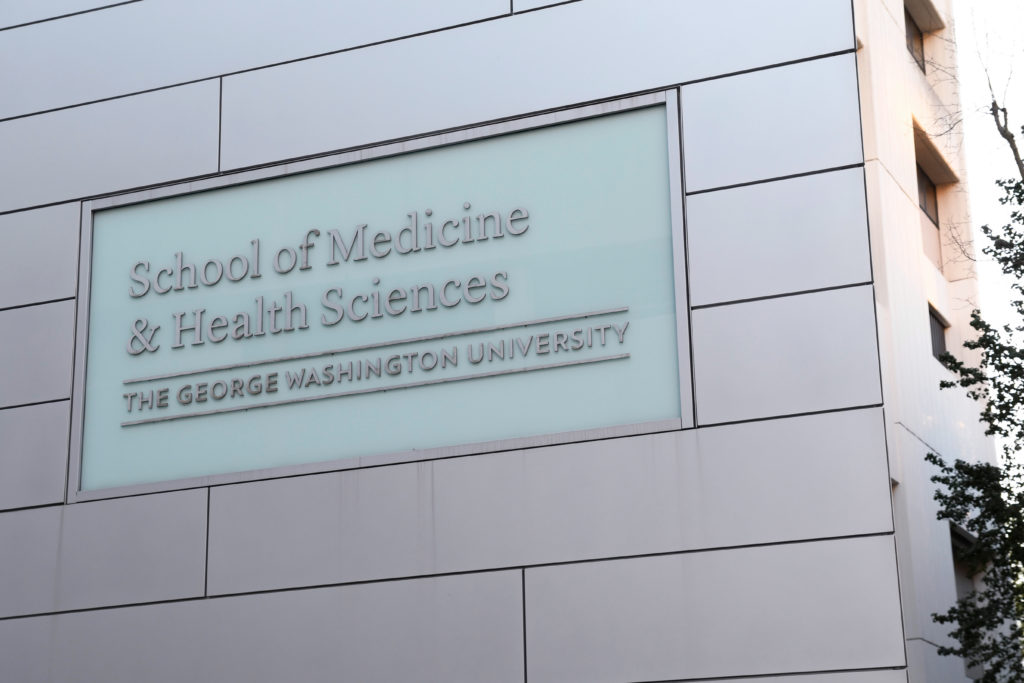Months after School of Medicine and Health Sciences officials formed an anti-racism coalition in light of Black Lives Matter protests this summer, members said they formed several working groups to address implicit biases within areas of GW’s medical enterprise.
Yolanda Haywood, the interim associate dean for diversity and inclusion at the medical school and the co-leader of the coalition, said SMHS officials formed the coalition in June to examine the school’s policies in the context of the American Public Health Association’s definition of racism, a system of treating people differently based on their race. The coalition spent the last few months holding a seminar series, which started in September, with the goal of educating people in the medical field on how race, racism and anti-racism affect the profession.
The lessons are led by medical professionals and focus on a different topic in race and health each session to educate students and faculty, confront bias and help participants understand intersectionality.
Haywood said the coalition is made up of an advisory group, which includes SMHS Dean Barbara Bass, and a steering committee composed of faculty, staff and students. She said the steering committee is divided into “domains” based on the areas that each domain will address, like the hospital, staff and students.
“Our vision is that the work of the anti-racism coalition is everybody’s job,” she said in an email. “It is not limited to those who are official participants in this coalition. Many changes have already been made, not initiated by ARC, but just from seeing the emphasis being made on anti-racism efforts by leadership.”
Haywood said many members of the GW medical community have said they want to be involved in the coalition and view the opportunity to address systemic racism in the medical field as a “positive movement” to take steps to improve areas of diversity and inclusion.
“To be honest, we’ve also heard people say that they want this work to happen more quickly!” she said. “We understand but know we didn’t arrive at a place where racism became part of academic medicine overnight, and dismantling it will not happen overnight. But we are going to work at it, and Dean Bass has said that she wants sustainable change, not a flash in the pan and not performative work.”
She said the core group of the coalition meets each week, the steering committee meets monthly and the executive committee meets once every two months.
“Each individual domain of the steering committee is developing actionable items, specific to their area of operation, which will be implemented,” Haywood said. “These projects will include measurable outcomes that help us understand the impact of moving toward anti-racism.”
Haywood said the coalition is meant to address anti-racism in “every corner” of GW’s medical enterprise but declined to say how the domains will decide on which issues to address.
Minority groups are largely underrepresented as physicians, and as a result, minority patients receive poorer care due to implicit bias, 2019 research from the Journal of the American Medical Association found.
“The most apparent issue is compositional diversity and lack of racial and ethnic diversity among health care providers, in professions from medicine to physical therapy to dentistry to research,” Haywood said. “The lack of diversity is deep and profound.”
In a 2018 study by the American Association of Medical Colleges, 56 percent of physicians surveyed identified as White, 17 percent identified as Asian, 5 percent identified as Hispanic and 5 percent identified as Black or African American. The study found that the racial makeup does not reflect the diverse population of the patients that physicians are serving.
Experts in diversity and inclusion in the medical field said efforts to increase diversity and inclusion should include both education about anti-racism and efforts to recruit more medical professionals and students from diverse backgrounds.
Jerome Murray, a third-year medical student at Georgetown University and a member of the school’s Racial Justice Committee for Change, said implicit bias impacts minority groups because physicians’ racial prejudice can affect the quality of treatment the minority population receives.
He said people who aren’t affected by racism need to make a commitment to addressing racial equity in the medical field for diversity and inclusion efforts to be effective.
“If the coalition is there to help increase racial diversity and racial equity, in the group who it is not directly affecting, who it is not for, someone has to care,” Murray said. “People, multiple people, have to care and that has to happen all the time.”
Patrick Atis, a resident physician at Los Angeles Children’s Hospital and a member of the hospital’s diversity and inclusion committee, said low numbers of minority physicians in the medical field is the biggest problem the profession faces in terms of diversity.
“I think all physicians who come from a minority background acknowledge the lack of diversity,” he said.
He said increased outreach and mentorship of minority students early in their academic careers, like after-school STEM programs, could help retain those individuals in the field long term. Often, minority and underrepresented students fall behind early because of disparities in education funding, placing them at a disadvantage for medical school.
“It’s a chicken-and-an-egg type of thing in that the solution to the problem also comes from those who are a part of the problem in a way,” Atis said.







